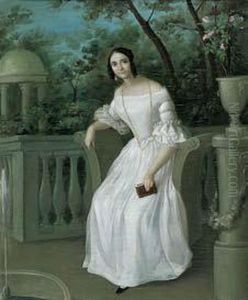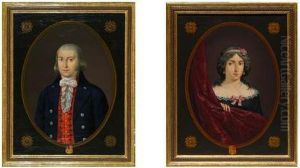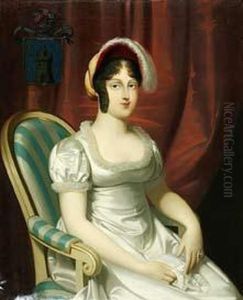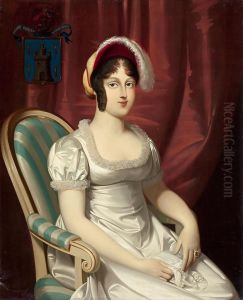Claudio Lorenzale Y Sugranes Paintings
Claudio Lorenzale y Sugrañes was a Spanish painter, associated with the Romantic movement, particularly noted for his historical and religious compositions. Born on March 6, 1814, in Barcelona, Catalonia, Spain, Lorenzale was an important figure in the Catalan art scene of the 19th century. His early education took place in his hometown, and he developed a keen interest in art from a young age.
Lorenzale's artistic inclinations led him to study at the Llotja School, the prestigious Academy of Fine Arts in Barcelona, where he was influenced by Neoclassical ideals and the works of the old masters. He was particularly drawn to the Italian Renaissance, which would greatly influence his future work. As a young artist, Lorenzale was also influenced by the Nazarene movement, a group of Romantic painters who aimed to revive the spirituality and sincerity they found in the art of the early Renaissance and medieval periods.
During his career, Lorenzale became known for his meticulous approach to painting and his devotion to historical accuracy in his works. He often depicted scenes from history with an emphasis on fidelity to the period's costumes and settings. His most famous work, 'The Dream of the Virgin', is a prime example of his style, combining a romanticized religious subject with a precise and detailed representation of medieval iconography.
Despite his talent and the relative success he found during his lifetime, Lorenzale's career was cut short due to health issues. He died on November 28, 1849, in Barcelona. Although his life was brief, Lorenzale left behind a legacy that had a lasting impact on the development of Catalan art. His works are preserved in various art institutions, including the Museu Nacional d'Art de Catalunya in Barcelona, serving as a testament to his artistic vision and dedication to the Romantic spirit.






